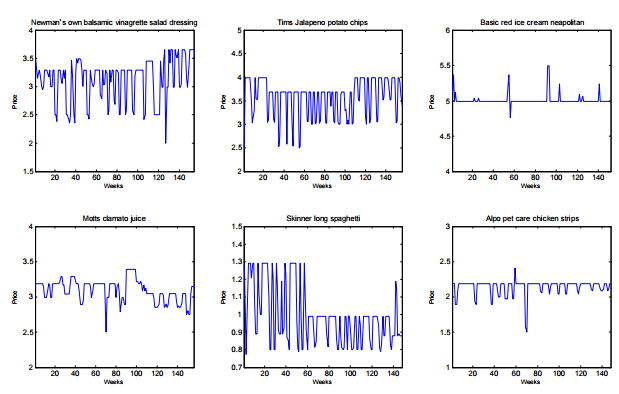
Sticky prices illustrated [1]
Sticky prices delay price jumps hoping customers will be happier
“We can’t change prices biannually, it is not the culture here.”
“We said we weren’t going to raise prices that year and I believe that once you say that, you should stick with it.”
…if the costs are stable, then doubling the frequency of price changes… invites customers to complain, to demand discounts and rebates, and to ask to renegotiate.
…price rigidity was perceived by the company’s customers to be a sign of “customer orientation” and therefore a good thing.
…many customers were more positively disposed to do business with companies who only changed their prices according to a predictable time schedule. Indeed, price rigidity was a source of pride within a company because it indicated that one’s relationship with customers was more important than the “bottom line.”
“We will take it in the pants rather than pass it on down to our customers.”
Sticky prices delay price drops that might jump up again
One member of the sales force aptly described cutting prices as “feeding the animal.” Such a decision sets up a dangerous cycle: cutting prices in order to get business this period leads to a response by a competitor with a still lower price. This lower price puts return pressure on the firm to lower its prices again.
…both the sales force and customers would sometimes argue against a price decrease because it would make a price increase in later years more expensive because of the need to convince customers that prices should go up again. Thus any price change that does not make sense for the customer can cause customer antagonism.
Sticky prices eventually jump, and effort with customers jumps up
…“every time you have one of those price changes you have to go in there and you are opening a Pandora’s box.”
“It is getting to be a running joke that every December and January I am coming in with some [price] change… They will say things like: ‘Where does that come from?… The direction is not consistent… You change discounts… dramatically, we don’t know if you are committed to us or not.’”
“Pricing season around here lasts longer than the NFL.”
“All of these costs depend on the size of the price change.”
During the pricing season we studied, a major customer called a senior vice president to negotiate a new discount level. The senior vice president and his staff flew to meet with the customer, which took two days. The team then returned to headquarters to gather additional data about the customer, similar customers, the firm’s competitors, and the effect of the customer’s purchases on the firm’s revenue. The pricing team recalculated the effect of their price changes on that customer and similar customers. They met, suggested additional analysis, met again, and decided on what they wanted to offer at the next round of meetings with the customer. Then they planned a presentation for the customer. The team then flew back with three corporate people, an area manager, and the account manager for another two days.
New large accounts require even more effort.
Although the company carries only about 8,000 products and it changes the list prices of almost all of them each year, the actual number of price changes it undertakes each year is many times higher because of the individually negotiated prices, discounts, and rebates. Therefore, the actual number of price changes undertaken is quite large, in the range of 10,000–54,000 each year.
Sticky prices speed up when overall prices move more, because people adapt
“There was… a period of some rapid inflation back in the Carter years where we would barely get a price sheet printed and you would have to start working on another one, every 6 months or so.”
“The [price] increases we experienced during that [inflationary] time were very much largely driven by cost and our average costs were going up and we were trying to recoup that… [During] high-inflation period you could get away with the high price increases. I think there was expectations in the market place; our customers are saying ‘I am able to in ate my prices to the end user so I shouldn’t be surprised when my vendor raises their prices…’ The distributors could pass on their prices a lot of easier than they can now.”[2]
- Koning, JP. “Are prices getting less sticky?” 14 Oct. 2015, jpkoning.blogspot.com/search?q=are+prices+getting+less+sticky Accessed 13 May 2017.
- Zbaracki, Mark J., et al. “Managerial and customer costs of price adjustment: direct evidence from industrial markets.” Review of Economics and statistics2 (2004): 514-533s.